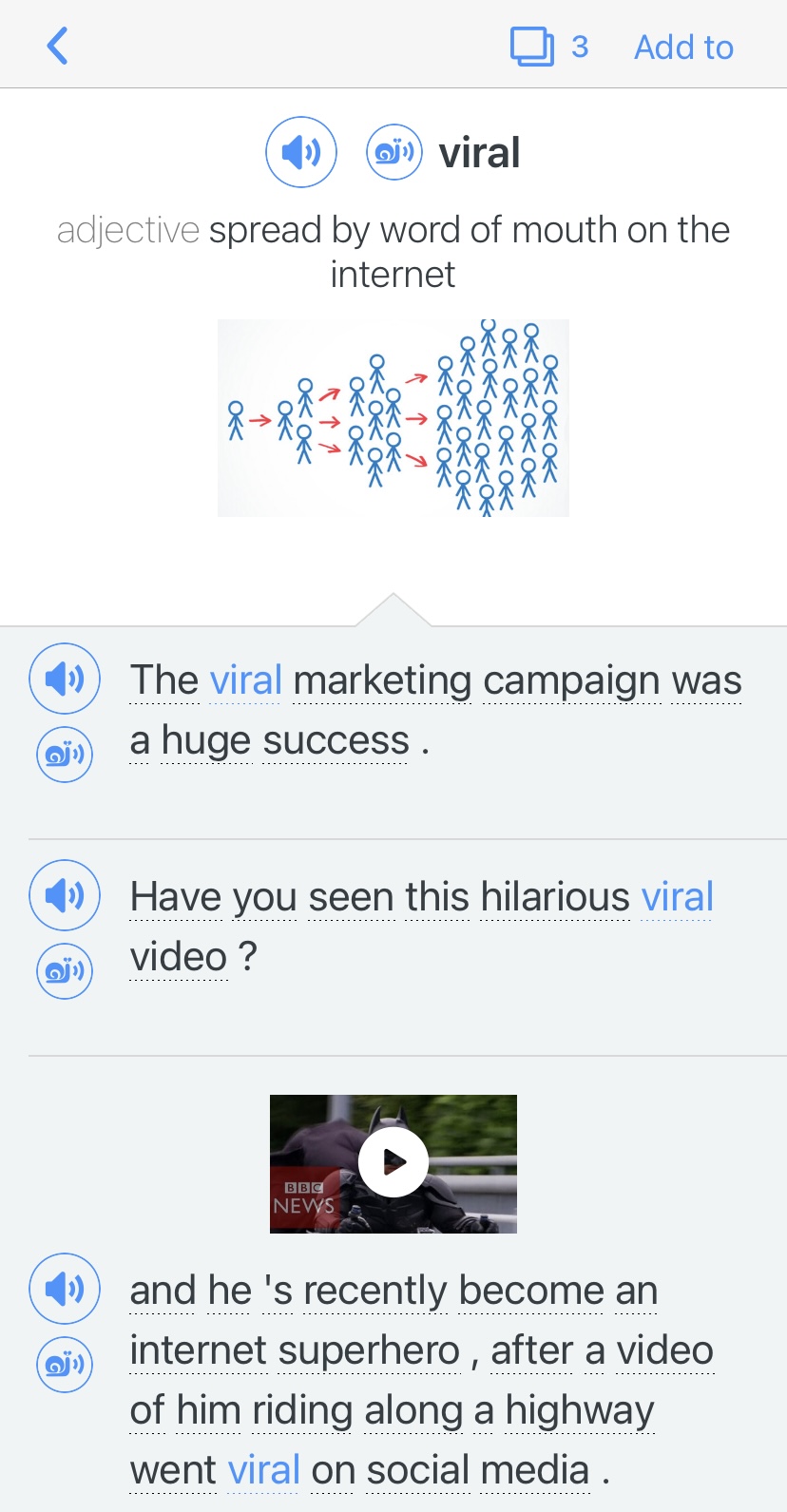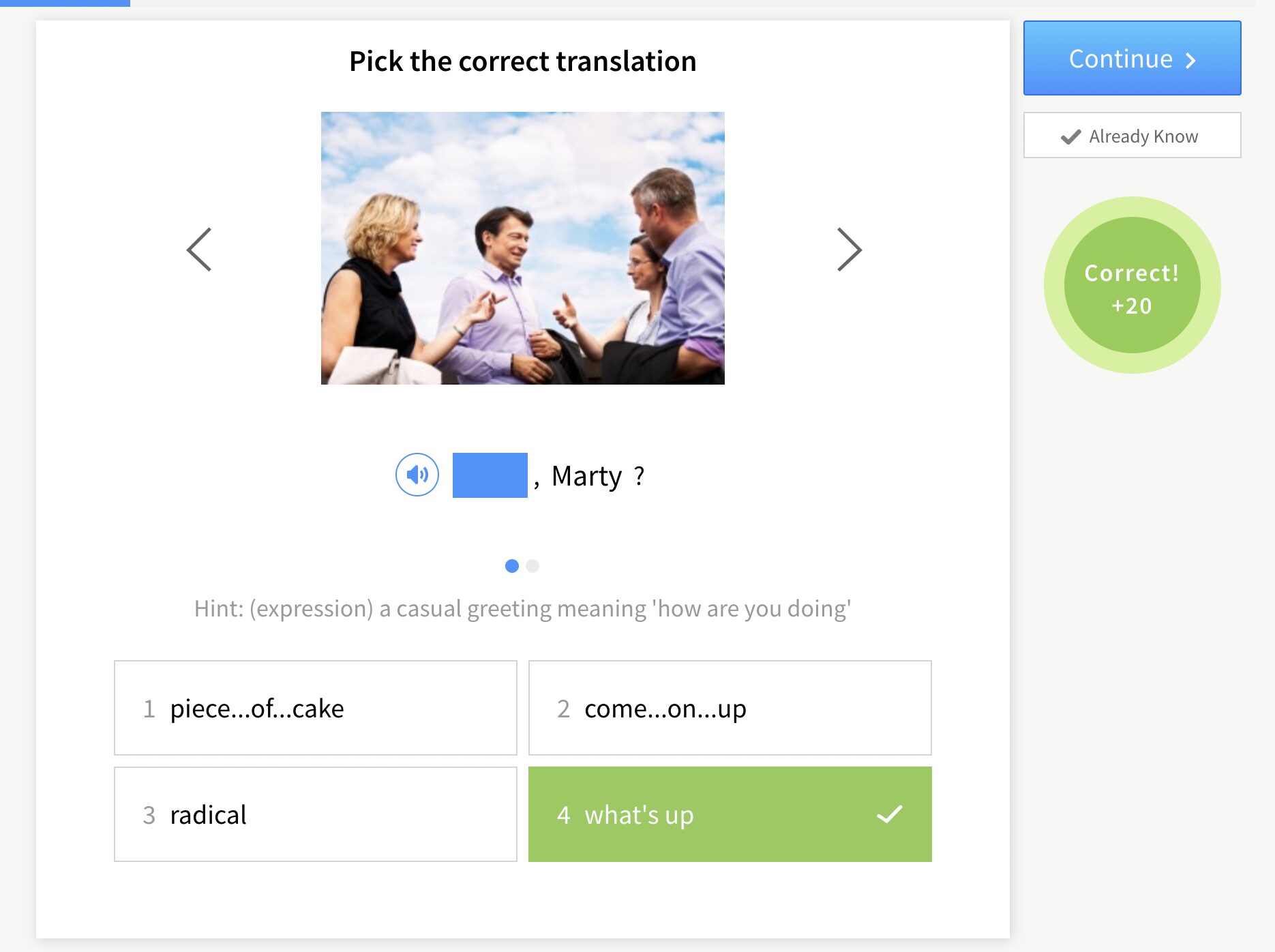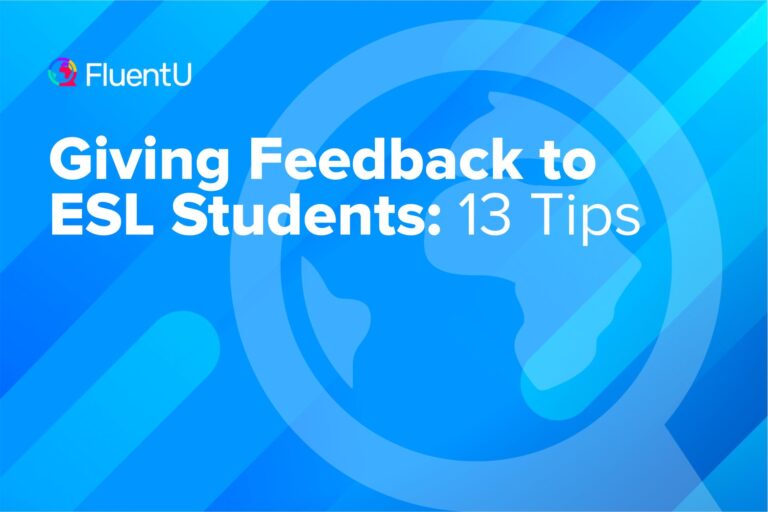Contents
- 1. Paper Airplane You
- 2. Four Corners
- 3. Say Cheese
- 4. Concentric Circles
- 5. Where Are You From? Where Will You Go?
- 6. Cootie Catcher Questions
- 7. Who’s in Your Circles?
- 8. Two Truths and a Lie
- 9. Would You Rather
- 10. Find Someone Who…
- 11. Never Have I Ever
- 12. Memory Wall
- 13. Telephone Pictionary
- 14. Charades
- 15. Jenga Questions
- What Makes a Good ESL Icebreaker?
- And One More Thing…
15 ESL Icebreakers

Many of us have seen over-used or boring icebreakers fall flat, especially during conferences and training, whether we’re the ones leading them or enduring them.
But when done right, icebreakers are highly effective, help people connect who otherwise might’ve been too shy to speak, create a welcoming atmosphere and more. Let’s go over 15 fun, effective ESL icebreakers you can use to get students chatting and improving their English.
Download: This blog post is available as a convenient and portable PDF that you can take anywhere. Click here to get a copy. (Download)
1. Paper Airplane You
Level: Upper-beginner +
Skill focus: Writing
Instructions:
1. Have students write three to five facts about themselves on a piece of paper.
2. Next, they fold the paper into a paper airplane. (If you aren’t sure how to make one that flies, check out this article on creating the best paper airplanes.)
3. On your count, everyone flies their planes toward the middle of the room. Then students pick up a plane that landed near them.
4. Students take turns reading the facts written on the plane and try to guess whose it was. Let the class help if individuals get stuck.
You can even tailor your students’ answers to what you’re studying.
For example, if you’re doing a sports unit, have students write three sports they like. If you’re studying travel, they could write three places they would like to go.
2. Four Corners
Level: Intermediate – Advanced
Skill focus: Listening
Preparation:
Before playing, label the corners of your room one through four. Then brainstorm several get-to-know-you questions.
How to play:
1. Start asking students the questions you’ve come up with. For example, ask about their favorite sports, their favorite movie genres, their favorite animals, etc.
2. Give the students four answer choices—one for each corner. For example, if you’re asking about their favorite animals, you might give them these choices: 1. Dog 2. Cat 3. Fish 4. Bird.
3. Students then move to the corner that represents their answer.
This helps students get to know one another and see what they have in common with other students in your class. And that’s a good starting point for chit-chat and/or developing friendships.
3. Say Cheese
Level: Any level
Skill focus: Speaking
Preparation:
1. Gather some small, opaque containers. Like old film canisters (ask at a photo lab—they usually have some they’re getting rid of) or plastic Easter eggs.
2. Tape an icebreaker question on the outside of the container. If you need some ideas of questions to ask, look at this list for inspiration.
3. Put a small item inside each container. If you want pairs of students working together, put the same item in each two canisters. If you want groups of three, then put the same item inside each of the three containers.
Good items to put inside the canisters include pennies, cotton balls, popcorn kernels, erasers, etc.
How to play:
1. Give each student a random canister.
2. Tell students not to look in their container but to shake it instead.
3. Using the sound of the canister only, they should find the person/people with the same item in their container.
4. After students find their partners or groups, have each person introduce him/herself and answer the question on the outside of their canister. The other members of the group should also answer each question.
5. To maximize this activity’s effectiveness, ensure the items have different questions outside the container. Or keep it simple and put a different question on each canister.
By limiting students to the sound of their item and permitting them to listen only to their own canister, students will have to describe what they hear to find their match, giving them good speaking practice.
Another great aspect of this game is once you set it up, it’ll be ready to use anytime you need to fill a few minutes.
And you can change things up whenever you want by putting new questions on the outside of each canister or changing the items inside.
4. Concentric Circles
Level: Intermediate – Advanced
Skill focus: Speaking
Preparation:
Divide your class into two groups. Form two circles in the middle of the room, one inside the other so each person faces one partner.
How to play:
1. Ask an icebreaker question to the class and give students a chance to answer.
2. After one minute, call out, “Rotate!”
3. The inner circle should move one spot clockwise. Students should now be facing a new partner.
4. Call out another icebreaker question and give students a minute to answer before rotating again.
5. Keep going until you run out of time or until students are back facing their first partner.
5. Where Are You From? Where Will You Go?
Level: Any level
Skill focus: Speaking
Preparation:
You’ll need a world map for this activity, so grab an empty bulletin board and get one up before you start.
How to play:
1. Give each student two pushpins or straight pins to put on the map.
2. Each person should put one on the map to mark where they’re from and another to mark where they would like to go.
3. Once all the pushpins are in place, the class tries to decide who placed each pushpin on the map.
This is a flexible activity that you can adapt to the skill level of your students.
For beginning students, have them ask simple questions for their guesses:
Mario, are you from Italy?
Na-An, do you want to go to the Bahamas?
For intermediate students, encourage them to use modals and phrase their guesses as statements:
Mario might be from Italy.
Na-An could’ve marked the Bahamas.
Challenge your advanced students with this activity by requiring them to give reasons for their guesses. For example:
Na-An probably chose the Bahamas because she loves the beach.
6. Cootie Catcher Questions
Level: Intermediate – Advanced
Skill focus: Writing / Speaking
How to play:
1. Have students follow these directions to make a paper cootie catcher.
2. Have them write a get-to-know-you question under each flap (the “fortunes” area).
3. Students pair up and play, answering the questions that they land on.
4. Give each person a chance to run the cootie catcher and to answer a question from their partner’s before switching pairs and going another round.
7. Who’s in Your Circles?
Level: Intermediate – Advanced
Skill focus: Speaking
How to play:
1. Have each student draw three concentric circles on a blank piece of paper.
2. Pick a topic for the round (favorite food, favorite season, etc.) and have students write it in the center circle.
3. They should label the second circle “Love,” the third circle “Like” and the space outside the circles “Don’t Like.”
4. Each student writes something (say, a food) they love in the innermost circle under the topic.
5. Students start chatting, bringing their papers with them and asking how other students feel about the food they wrote.
6. When a classmate answers, the person should write their classmate’s name in the appropriate area of their paper.
7. Play for a few minutes and then start again with another topic—sport, type of music, favorite season, etc.—with a new sheet of paper.
8. After a few rounds, encourage students to discuss common interests with people who share their inner circle on different topics.
8. Two Truths and a Lie
Level: Any level
Skill focus: Speaking / Listening
How to play:
1. Pair students up in groups
2. Each thinks of three statements about themselves—two of them are true and one is a lie.
3. The students tell their three statements to their partner.
4. The partner has to guess which statement is the lie.
5. The students confirm if their partners guessed correctly or not, and they continue to guess until they get it right.
Beginner students can opt for simple phrases like “I’m from [country],” “I like cats,” “I’m [number] years old,” etc. While intermediate and advanced students can create more complex statements, such as past experiences or future plans.
9. Would You Rather
Level: Intermediate – Advanced
Skill focus: Speaking / Listening
Preparation:
Depending on your students’ levels, you may or may not have to prepare for this game.
Lower intermediate students might have trouble thinking of “would you rather” questions, so it’s a good idea to have some prepared ahead of time that you can give them.
Advanced and upper-intermediate students should be proficient enough to create their own questions.
How to play:
1. Have students partner up in groups of two.
2. Each student takes a turn asking, “Would you rather…” and giving two options. For example, “Would you rather eat the same food every day or listen to the same song every day?”
3. Once the partner student has answered the question, have them explain why they chose the option they did.
4. The students switch turns and repeat the process.
10. Find Someone Who…
Level: Intermediate – Advanced
Skill focus: Comprehension / Speaking
Preparation:
On a whiteboard or sheet of paper, write 10-15 statements describing experiences.
Examples could be, “Find someone who has a tattoo,” “Find someone who is an only child,” “Find someone who has never been out of the country before,” etc.
How to play:
1. Give students the statements.
2. Explain that they need to find one person who identifies with each of the statements as quickly as possible.
3. Set a timer for 5-10 minutes and let the students go around the room asking their classmates questions to match them with the statements.
11. Never Have I Ever
Level: Intermediate – Advanced
Skill focus: Listening / Speaking
How to play:
1. Have students sit or stand in a circle, holding up five fingers.
2. Decide who goes first and the rotation of the circle (i.e., will you take turns going clockwise or counterclockwise?)
3. Each student takes turns creating a “never have I ever” statement, such as “Never have I ever been to Europe.”
4. If any student in the circle has done what the person says they never have, they must put a finger down. Once all five fingers are down, the student is out of the game.
5. Whoever is the last to run out of fingers wins.
12. Memory Wall
Level: Upper Intermediate – Advanced
Skill focus: Listening / Speaking / Retention
How to play:
1. Give everyone in the group 2-3 minutes to think of a unique or interesting fact about themselves.
2. Once the time is up, the first person shares their fact.
3. Each student recites the list of the previous students’ interesting facts, adding one new fact about themselves at the end. This means the last person tries to recite the entire class’s facts plus their own.
With this game, it’s very likely that you’ll need to allow the other students to help the ones further down the line—which is perfectly fine!
13. Telephone Pictionary
Level: Any level
Skill focus: Writing / Reading
How to play:
1. Take out a sheet of paper and give it to the first student.
2. The first student writes a sentence or phrase at the top of the paper, then passes it to the next student.
3. The next student draws a picture of the first student’s phrase, then passes it to the next student.
4. That student writes a sentence describing the picture.
5. Repeat the process until the paper has gone through the whole class.
14. Charades
Level: Any level
Skill focus: Speaking / Comprehension
Preparation:
Before class, prepare enough actions, characters, etc. for each student in the class. You’ll be assigning each student something to act out.
How to play:
1. Give each student a piece of paper with their assigned action, item, character, etc. This can be themed to match your recent lessons, such as a sport or animal.
2. Each student takes turns acting out what’s on their paper for 60 seconds while the rest of the class tries to guess what their assigned paper was.
3. Have each student take turns acting out their paper for 60 seconds until the whole class has had a turn.
15. Jenga Questions
Level: Intermediate – Advanced
Skill focus: Speaking
Preparation:
Write questions on each Jenga block before class that each of your students will answer. Put them in a box and take them to class.
How to play:
1. Start on one side of the classroom and have the first student pull out a Jenga block randomly from the box.
2. Have the student read the Jenga block question out loud and then answer the question.
3. Once they’ve answered, continue through the classroom, letting students pull out blocks and answer them one by one until you reach the last student.
What Makes a Good ESL Icebreaker?
Not all icebreakers are created equal. And not all icebreakers are good for ESL students.
Here’s what to look for when choosing effective, appropriate icebreakers for your English class:
- Don’t make students take big social risks with people they barely know. Not everyone is ready to put their personal details out there for the world to see. So good icebreakers don’t expect your students to get overly personal with people they don’t know. There needs to be a fine line.
- Match your students’ proficiency level. No one will participate if your icebreaker requires more English input or comprehension than your students can handle. But if it’s too easy, they’ll get bored quickly. You want your icebreakers to be at your students’ language level, not above or below it.
- Good icebreakers appeal to students. In other words, they aren’t lame. When choosing an icebreaker for your class, keep in mind what they like. A bunch of fifteen-year-olds aren’t going to like the same things that business professionals like. You can find general icebreaker dos and don’ts here.
- Pro tip: Sometimes, giving the students something to talk about in an icebreaker game can be beneficial. For example, you can choose a video on FluentU—such as a film trailer or mini-documentary—then ask more in-depth questions to spark meaningful discussions about the video topic. Start with some basic questions, such as “What did you think of the video?” or “Do you and your partner agree with the video?” The interactive subtitles and key vocabulary on FluentU will also help improve their listening comprehension.
Getting to know new people in English shouldn’t cause anxiety in your students, and it doesn’t have to.
With activities that appeal to your students and don’t put them in too intimate situations, getting to know one another can become something your students love and look forward to.
Download: This blog post is available as a convenient and portable PDF that you can take anywhere. Click here to get a copy. (Download)
And One More Thing…
If you’re like me and prefer learning English on your own time, from the comfort of your smart device, I’ve got something you’ll love.
With FluentU’s Chrome Extension, you can turn any YouTube or Netflix video with subtitles into an interactive language lesson. That means you can learn from real-world content, just as native English speakers actually speak.
You can even import your favorite YouTube videos into your FluentU account. If you’re not sure where to start, check out our curated library of videos that are handpicked for beginners and intermediate learners, as you can see here:
FluentU brings native English videos within reach. With interactive captions, you can hover over any word to see an image, definition, and pronunciation.
Just click on the word to see other example sentences and videos where the word is used in different contexts. Plus, you can add it to your flashcards! For example, if I tap on the word "viral," this is what pops up:
Want to make sure you really remember what you've learned? We’ve got you covered. Practice and reinforce the vocab from each video with learn mode. Swipe to see more examples of the word you’re learning, and play mini-games with our dynamic flashcards.
The best part? FluentU tracks everything you’re learning and uses that to create a personalized experience just for you. You’ll get extra practice with tricky words and even be reminded when it’s time to review—so nothing slips through the cracks.
Start using the FluentU website on your computer or tablet or, better yet, download our from the App Store or Google Play.
Click here to take advantage of our current sale! (Expires at the end of this month.)












